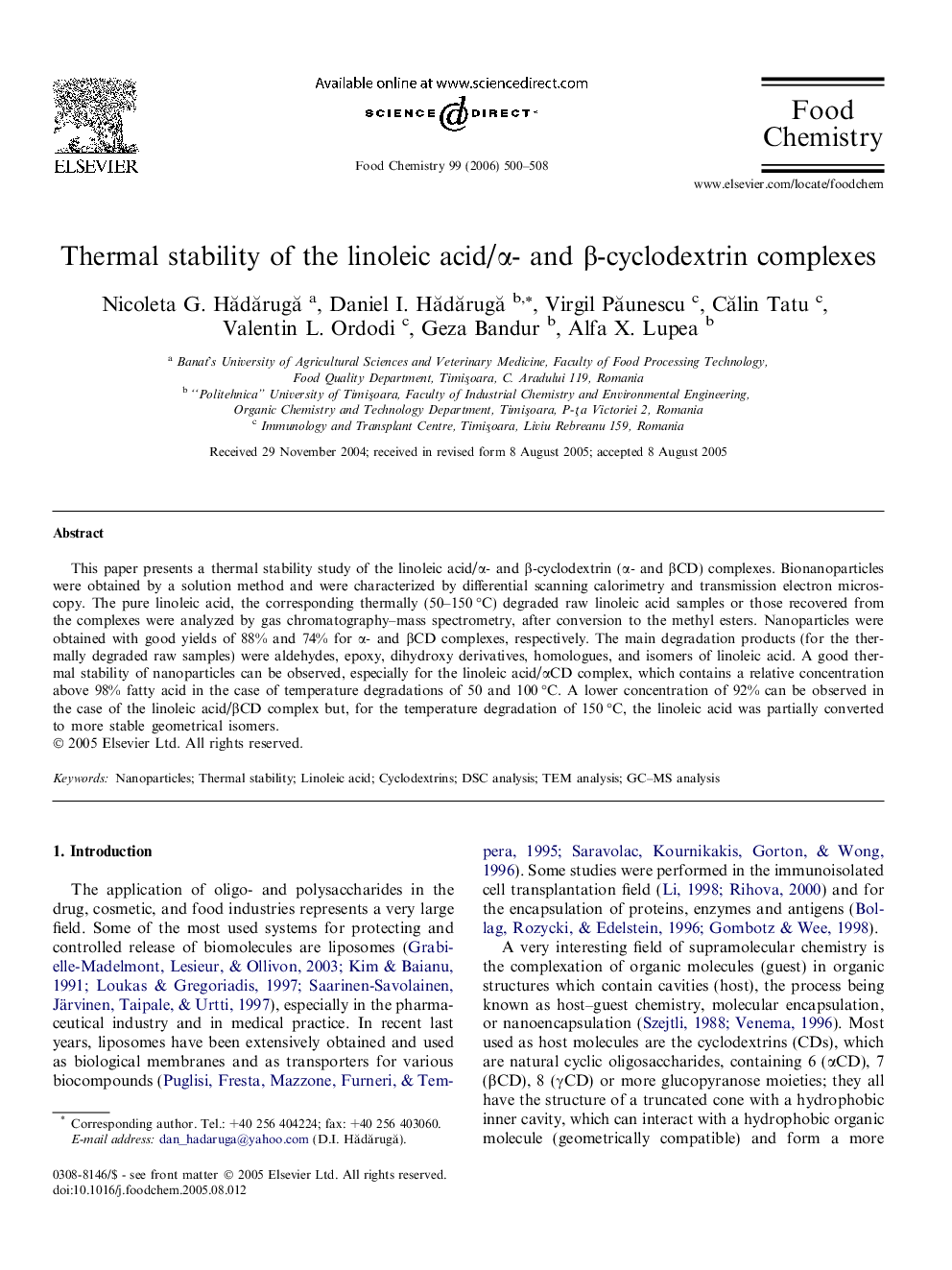| Article ID | Journal | Published Year | Pages | File Type |
|---|---|---|---|---|
| 1188680 | Food Chemistry | 2006 | 9 Pages |
This paper presents a thermal stability study of the linoleic acid/α- and β-cyclodextrin (α- and βCD) complexes. Bionanoparticles were obtained by a solution method and were characterized by differential scanning calorimetry and transmission electron microscopy. The pure linoleic acid, the corresponding thermally (50–150 °C) degraded raw linoleic acid samples or those recovered from the complexes were analyzed by gas chromatography–mass spectrometry, after conversion to the methyl esters. Nanoparticles were obtained with good yields of 88% and 74% for α- and βCD complexes, respectively. The main degradation products (for the thermally degraded raw samples) were aldehydes, epoxy, dihydroxy derivatives, homologues, and isomers of linoleic acid. A good thermal stability of nanoparticles can be observed, especially for the linoleic acid/αCD complex, which contains a relative concentration above 98% fatty acid in the case of temperature degradations of 50 and 100 °C. A lower concentration of 92% can be observed in the case of the linoleic acid/βCD complex but, for the temperature degradation of 150 °C, the linoleic acid was partially converted to more stable geometrical isomers.
